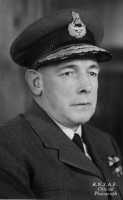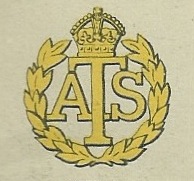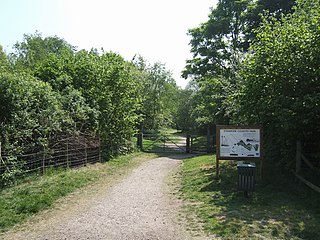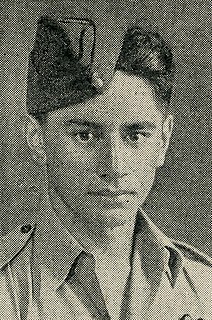
The Royal New Zealand Air Force (RNZAF) is the air force component of the New Zealand Defence Force. It was formed from New Zealand elements of the British Royal Air Force, becoming an independent force in 1923, although many RNZAF aircrew continued to serve in the Royal Air Force until the end of the 1940s.

The military history of New Zealand during World War II began when New Zealand entered the Second World War by declaring war on Nazi Germany with Great Britain. New Zealand's forces were soon serving across Europe and beyond, where their reputation was generally very good. In particular, the force of the New Zealanders who stationed in Northern Africa and Southern Europe was known for its strength and determination, and uniquely so on both sides; German Commander of the Afrika Corps Erwin Rommel has been recorded as once saying "Give me the Māori Battalion and I will conquer the world".
The Women's Auxiliary Air Force (WAAF), whose members were referred to as WAAFs, was the female auxiliary of the Royal Air Force during World War II. Established in 1939, WAAF numbers exceeded 180,000 at its peak strength in 1943, with over 2,000 women enlisting per week.

14 Squadron RNZAF is a squadron of the Royal New Zealand Air Force. In 2015 the squadron was re-raised and equipped with 11 Beechcraft T-6 Texan II. A new aerobatic display team called the Black Falcons was also formed using the new aircraft. They replaced the RNZAF display team known as the Red Checkers.

488 Squadron was the name given to two distinct Royal New Zealand Air Force squadrons during the Second World War. Both were formed under Article XV of the Empire Air Training Scheme and served under the operational command of the Royal Air Force.

Air Vice Marshal Sir Leonard Monk Isitt was a New Zealand military aviator and senior air force commander. In 1943 he became the first New Zealander to serve as the Chief of the Air Staff of the Royal New Zealand Air Force, a post he held until 1946. At the close of World War II, Isitt was the New Zealand signatory to the Japanese Instrument of Surrender. After the war, following retirement from the Air Force, he worked as chairman of Tasman Empire Airways.

The Auxiliary Territorial Service was the women's branch of the British Army during the Second World War. It was formed on 9 September 1938, initially as a women's voluntary service, and existed until 1 February 1949, when it was merged into the Women's Royal Army Corps.
489 (NZ) Squadron was formed from pilots of the Royal New Zealand Air Force on 12 August 1941 under RAF Coastal Command as an anti-submarine and reconnaissance unit.

John Milne Checketts, was a New Zealand flying ace of the Second World War, who was credited with the destruction of 14+1⁄2 enemy aircraft, three probably destroyed and 11 damaged.

Wigram Aerodrome is located in the Christchurch suburb of Sockburn, later to be split-suburb of Wigram and now split again as Wigram Skies. It was gifted by Sir Henry Wigram for the Canterbury (NZ) Aviation Company on 20 September 1916 and originally named Sockburn Airport. In 1923 that was then gifted to the Crown as a Royal New Zealand Air Force base. Charles Kingsford-Smith made the first Trans-Tasman flight from Sydney to Wigram on 10 September 1928.

The Royal Canadian Air Force Women's Division was a non-combatant element of the Royal Canadian Air Force (RCAF) which was active during the Second World War. The Women's Division's original role was to replace male air force personnel so that they would be available for combat-related duties. First called the Canadian Women's Auxiliary Air Force (CWAAF), the name changed to Royal Canadian Air Force Women's Division in February 1942. Women's Division personnel were commonly known as WDs.

RAF Bridgnorth was a Royal Air Force Station, created after the outbreak of World War II on 6 November 1939, at Stanmore, to the east of Bridgnorth, Shropshire, England. However, as RAF Stanmore Park already existed in Middlesex, it was named RAF Bridgnorth. Although during its existence various static aeroplanes were displayed as Gate Guardians, RAF Bridgnorth never had a runway.

Bert Sam Wipiti, DFM was a New Zealand fighter pilot and flying ace of the Second World War. Born in New Plymouth, he enlisted in the Royal New Zealand Air Force (RNZAF) in 1941 and when he was posted to No. 243 Squadron in Singapore, he was the first Māori airman to leave New Zealand for active duty. Following the Japanese invasion of British Malaya, he destroyed five Japanese aircraft before being evacuated to Java in February 1942. He later flew with the RNZAF's No. 485 Squadron in Europe and was killed on operations while escorting bombers on a raid over France.

Mary Teston Luis Bell was an Australian aviator and founding leader of the Women's Air Training Corps (WATC), a volunteer organisation that provided support to the Royal Australian Air Force (RAAF) during World War II. She later helped establish the Women's Auxiliary Australian Air Force (WAAAF), the first and largest women's wartime service in the country, which grew to more than 18,000 members by 1944.

Fraser Barron DSO & Bar, DFC, DFM, was an officer of the Royal New Zealand Air Force (RNZAF) who flew as a pilot with Bomber Command and was killed in flying operations during World War II.

The Royal New Zealand Air Force (RNZAF) is organised into a small number of flying squadrons and ground-based units. Most of the RNZAF's operational and training units are stationed at RNZAF Base Auckland and RNZAF Base Ohakea in the North Island. Several training and maintenance units are located at RNZAF Base Woodbourne in the South Island.
Air Commodore Dame Felicity Barbara Hill, was a British Royal Air Force officer. From 1966 to 1969, she served as Director of the Women's Royal Air Force. She died in January 2019 at the age of 103.

Royal Air Force Harrogate or RAF Harrogate, sometimes known as Ministry of Defence (MoD) Harrogate, was the name for two distinct Royal Air Force establishments within the town of Harrogate, North Yorkshire, England. The main site was at St George's in the south-west of the town and was home to a medical training establishment (MTE), supply branch and Women's Auxiliary Air Force (WAAF) training centre. The site was demolished in 1994. The term RAF Harrogate was also applied to the requisition of several hotels in Harrogate town centre which acted as a No. 7 Personnel Reception Centre during World War II. This should not be confused with RAF Menwith Hill, a current RAF base near Harrogate.
RNZAF Station Weraroa was a Royal New Zealand Air Force station located southeast of Levin, 44km southwest of Palmerston North, New Zealand. Originally established on Kimberley Rd in 1935 as a small local airstrip, it was commandeered as an air force base by the RNZAF at the outbreak of the Second World War in 1939.
















